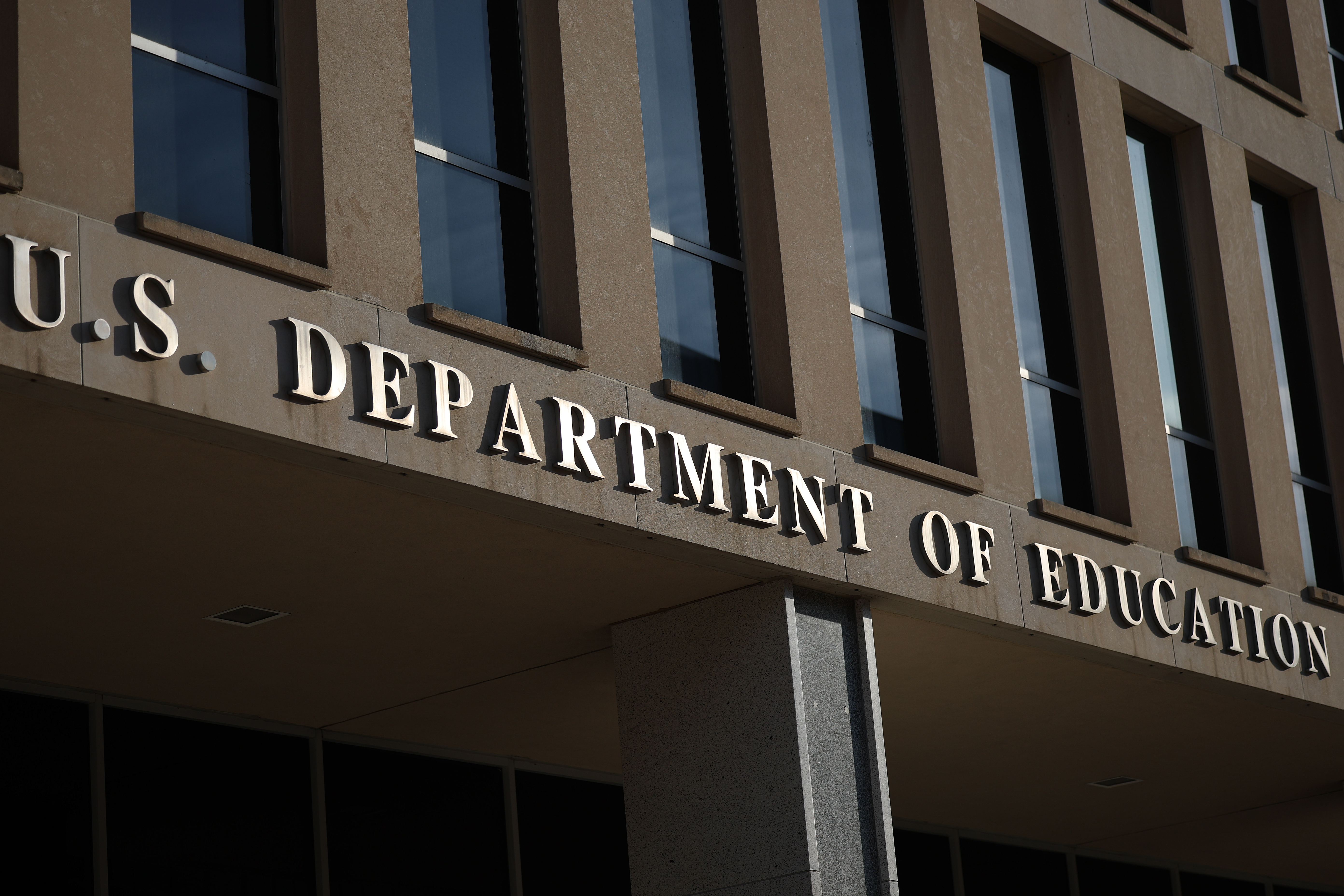Defaulted Student Loans: Stop Wage Garnishment! Your Guide
Defaulted Student Loans: What Can They Garnish? Your Questions Answered
The Student Loan Collection Freeze is Thawing: What You Need to Know
Remember that sigh of relief when student loan payments were paused? For many, that respite is nearing its end. The U.S. Department of Education is gearing up to restart involuntary collections, including those dreaded wage garnishments, as early as May 5th. This means Uncle Sam is about to start knocking, and this time, he might be taking a chunk of your paycheck. For five long years, collection activity on federal student loans has been largely paused. But the party's over, folks. So, what does this mean for you? Let's dive into what you need to know about your rights and what payments can be garnished.
Why is This Happening Now? The End of the Road for Relief
You might be wondering, "Why now?" After several extensions, the government is moving toward ending the pandemic-era student loan relief measures. Think of it like a garden hose – the government has been pinching it off to slow the flow of payments. Now, they're releasing the pressure. According to a statement from U.S. Secretary of Education Linda McMahon, the government believes that “American taxpayers will no longer be forced to serve as collateral for irresponsible student loan policies.” This signals a shift toward stricter enforcement of repayment obligations.
Who's Affected? Are You in the Garnishment Crosshairs?
This resumption of garnishment primarily affects borrowers whose federal student loans are in default. Default typically occurs when you haven't made payments on your loans for 270 days. Are you unsure about your loan status? Don’t bury your head in the sand! Check your account information on the Federal Student Aid website. Knowing your status is the first step toward protecting yourself.
What Payments Can Be Garnished? The Nitty-Gritty Details
Let's get down to brass tacks: what can they actually take? Wage garnishment is the most common form of involuntary collection, but it's not the only one. Here's a breakdown:
Wage Garnishment: A Deep Dive
Wage garnishment means the Department of Education can take a portion of your disposable income directly from your paycheck. The maximum amount that can be garnished is generally 15% of your disposable income. Disposable income is what remains after legally required deductions, such as taxes. This is significant and can seriously impact your monthly budget.
Tax Refund Offset: Kiss Your Refund Goodbye?
Another common method of collection is a tax refund offset. If you're in default, the government can seize your federal income tax refund. Imagine the disappointment of anticipating that refund, only to have it disappear to pay down your student loans. It’s like finally seeing the light at the end of the tunnel only to discover it’s a train!
Social Security Benefit Offset: A Blow to Retirees
This is a particularly sensitive area. The government can also garnish a portion of your Social Security benefits to repay defaulted student loans. The amount that can be garnished from Social Security benefits is capped at 15% of your monthly benefit. This can create severe financial hardship for retirees and those with disabilities who rely on these benefits.
Other Federal Payments: Leave No Stone Unturned
The government can also intercept other federal payments, such as federal salary payments or federal contractor payments. They are thorough, so expect any money coming from a federal source to be fair game.
What Can't Be Garnished? Your Safeguards and Protections
Fortunately, there are some things that are generally protected from garnishment. State benefits, such as unemployment compensation or worker's compensation, are typically exempt from federal student loan garnishment. Private retirement accounts, like 401(k)s, are also generally protected. However, it's always best to consult with a financial advisor or legal professional for specific advice tailored to your situation.
Navigating the Garnishment Process: Know Your Rights
The Department of Education is required to provide you with a notice before garnishing your wages. This notice will include information about the loan in default, the amount owed, and your rights to challenge the garnishment. Don’t ignore this notice! Read it carefully and understand your options.
Challenging the Garnishment: Fight Back!
You have the right to challenge the garnishment if you believe it is incorrect or if it would create a financial hardship. You can request a hearing with the Department of Education to present your case. This is your chance to explain your situation and potentially negotiate a more manageable repayment plan.
The Financial Hardship Argument: Show Them the Struggle
If the garnishment would cause you significant financial hardship, you can request a hardship exemption. This involves providing documentation to demonstrate that the garnishment would leave you unable to meet basic living expenses, such as food, housing, and medical care. Gathering this documentation can be time-consuming, but it’s worth the effort if it means avoiding garnishment.
Rehabilitating Your Loan: A Fresh Start
Another option is to rehabilitate your defaulted loan. This involves making nine on-time payments over a ten-month period. Once you rehabilitate your loan, the default status is removed from your credit report, and you regain eligibility for federal student aid programs. Think of it as pressing the reset button on your loan!
Consolidation: Streamline and Simplify
Consolidation involves combining your defaulted loans into a new Direct Consolidation Loan. To consolidate a defaulted loan, you typically need to agree to repay the new loan under an income-driven repayment plan or make three consecutive, on-time payments on the defaulted loan before consolidating. Consolidation can simplify your repayment and potentially lower your monthly payments.
Income-Driven Repayment Plans: Tailoring Payments to Your Income
Income-driven repayment (IDR) plans can be a lifeline for borrowers struggling to afford their student loan payments. These plans base your monthly payment on your income and family size. If your income is low enough, your monthly payment could even be $0. After a certain period (typically 20 or 25 years), any remaining balance is forgiven. It's like a pressure valve that prevents your student loans from overwhelming your finances.
Avoiding Default: Prevention is Key
The best way to avoid garnishment is to prevent your loans from going into default in the first place. If you're struggling to make your payments, contact your loan servicer immediately. They can discuss your options and help you find a repayment plan that works for you. Proactive communication is crucial. Don’t wait until the problem spirals out of control.
When to Seek Professional Help: Don't Go It Alone
Navigating the complexities of student loan debt can be overwhelming. If you're feeling lost or unsure about your options, consider seeking professional help. A qualified student loan counselor or attorney can provide personalized advice and guidance. They can help you understand your rights, explore your options, and develop a strategy for managing your debt. It's an investment in your financial future. Just be sure to vet them carefully to avoid scams!
Conclusion: Take Control of Your Student Loan Debt
The resumption of student loan collections, including wage garnishment, is a significant concern for many borrowers. Understanding your rights and exploring your options is crucial to protecting yourself. Don't panic, but don't ignore the problem either. Take proactive steps to manage your student loan debt and avoid the pitfalls of default and garnishment. Whether it’s challenging a garnishment, rehabilitating your loan, consolidating your debt, or enrolling in an income-driven repayment plan, there are paths to navigate this situation. Remember, knowledge is power!
Frequently Asked Questions (FAQs)
- If my wages are garnished, how long will it last? The garnishment will continue until the defaulted loan is paid in full, resolved through rehabilitation or consolidation, or until you qualify for a suspension or termination of the garnishment (e.g., due to extreme financial hardship).
- Can a private student loan be garnished in the same way as a federal loan? Yes, but the process is different. Private lenders must first obtain a court order before garnishing your wages. You will have an opportunity to defend yourself in court.
- I'm currently unemployed. Can my tax refund still be offset? Yes, even if you are unemployed, your tax refund can still be offset to repay defaulted federal student loans. However, you may be able to request a hardship refund if you demonstrate that the offset would create a significant financial hardship.
- What happens if I ignore the garnishment notice from the Department of Education? Ignoring the notice means you forfeit your right to challenge the garnishment or request a hearing. The garnishment will proceed without your input, potentially impacting your financial stability.
- Are there any resources available to help me understand my student loan options? Yes, there are many resources available! The Federal Student Aid website is a good starting point. You can also contact nonprofit credit counseling agencies or consult with a qualified student loan advisor for personalized guidance.





